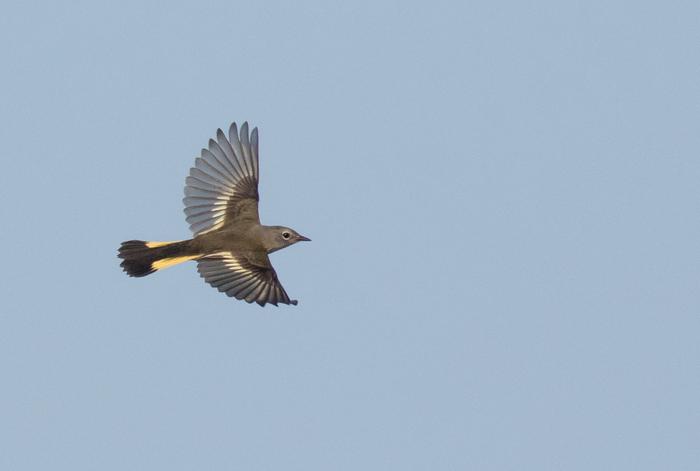In recent years, the intricate behaviors of migrating songbirds have drawn the attention of researchers, highlighting the potential social interactions that may occur during their nocturnal journeys. Led by the University of Illinois Urbana-Champaign, a groundbreaking study reveals that these migratory patterns might be influenced by more than just instinct and memory. Through an extensive analysis of over 18,300 hours of recorded flight calls, the research suggests that songbirds may establish social ties with other species while on the move, communicating vital information during their nighttime migrations.
Historically, the migration of songbirds has been viewed as a solitary endeavor, where individual birds rely primarily on innate drives to navigate their pathways. However, Benjamin Van Doren, the lead author of the study and an assistant professor in the Department of Natural Resources and Environmental Sciences, posits a shift in perspective. He explains that findings from their research indicate that songbirds might actively engage in vocal communication with one another as they traverse the night sky, forging connections that could facilitate their journey.
Van Doren emphasizes the significance of flight calls, which could serve multiple functions during migration. These calls may not only communicate a bird’s species, age, or sex but might also act as signals for navigation and the identification of suitable resting areas. This opens up a new dimension of understanding regarding how songbirds interact, suggesting that their social behaviors could play a crucial role in their survival during migration.
The research builds on previous studies conducted by collaborators from the University of Maryland Center for Environmental Science, which hinted at the potential for birds to form alliances during stopover sites. However, the absence of empirical data documenting vocal interactions in flight had until now left a gap in our understanding. The new findings challenge the notion that songbirds exclusively rely on ancestral migratory routes, instead suggesting that social dynamics among species may significantly influence their migratory behaviors, particularly at night when visual cues are unavailable.
To gain insight into these interactions, Van Doren and his team leveraged cutting-edge technology. Utilizing machine learning tools, they successfully analyzed the vast acoustic dataset collected from 26 sites across eastern North America. This advancement not only streamlined the identification of 27 distinct songbird species based on their unique flight calls but also revealed unexpected associations between different species that were greater than chance alone.
The team discovered that specific physical attributes, such as wing length, as well as the vocal similarities of the birds, played a vital role in these associations. Notably, species with comparable wing lengths tend to fly at similar speeds, facilitating their ability to remain in close proximity during migration. This finding highlights the potential for physical characteristics to influence social dynamics among migratory birds, raising questions about the evolutionary significance of such traits.
As the study continues to evolve, Van Doren’s team is considering further investigations to deepen their understanding of these interactions. Plans include attaching tiny microphones to individual birds, capturing their vocal exchanges with flying partners throughout their migrations. This innovative approach has the potential to yield invaluable insights into the nuances of communication among songbirds while flying through the expansive nighttime skies.
The implications of this research extend beyond mere academic curiosity. Understanding the social dynamics of nocturnal migration could have far-reaching consequences, particularly in the context of environmental changes and habitat loss. As songbird populations face unprecedented challenges due to climate change, preserving their migratory pathways may hinge on acknowledging and safeguarding the social relationships that underpin their journeys.
This transformative research not only enriches our understanding of songbird migration but also highlights the necessity of a collaborative and adaptive approach to wildlife conservation. By acknowledging and preserving the social bonds that facilitate migration, we can better equip ourselves to safeguard the future of these remarkable travelers in a rapidly changing environment. The ongoing exploration of these dynamics serves as a reminder of the complex interplay between instinct, environment, and social interaction in the natural world.
Through this lens, we observe a hallmark of nature: that survival is not solely about individual capability, but rather about the connections we forge along the journey. The call to action for conservationists and researchers alike is clear: understanding the social fabric of wildlife not only enhances our knowledge of their behaviors but is vital in crafting informed strategies to protect them in an uncertain future.
Given the intricate social networks suggested by this study, further research is essential. The dynamic nature of bird migration, driven by complex interactions, requires a deeper inquiry into the factors that facilitate these connections. By continuing to expand our understanding of these relationships, we can help ensure that the songs of the night sky persist through time.
Subject of Research: Social associations during nocturnal bird migration
Article Title: Study Reveals Social Connections in Nocturnal Songbird Migration
News Publication Date: 15 January 2024
Web References: University of Illinois, Cornell Lab of Ornithology, University of Maryland Center for Environmental Science, Current Biology Study
References: Current Biology research paper (January 15, 2024)
Image Credits: Credit: Andrew Dreelin
Keywords
Songbirds, migration, social behavior, acoustic recordings, ecological interactions, conservation, nocturnal communication.





